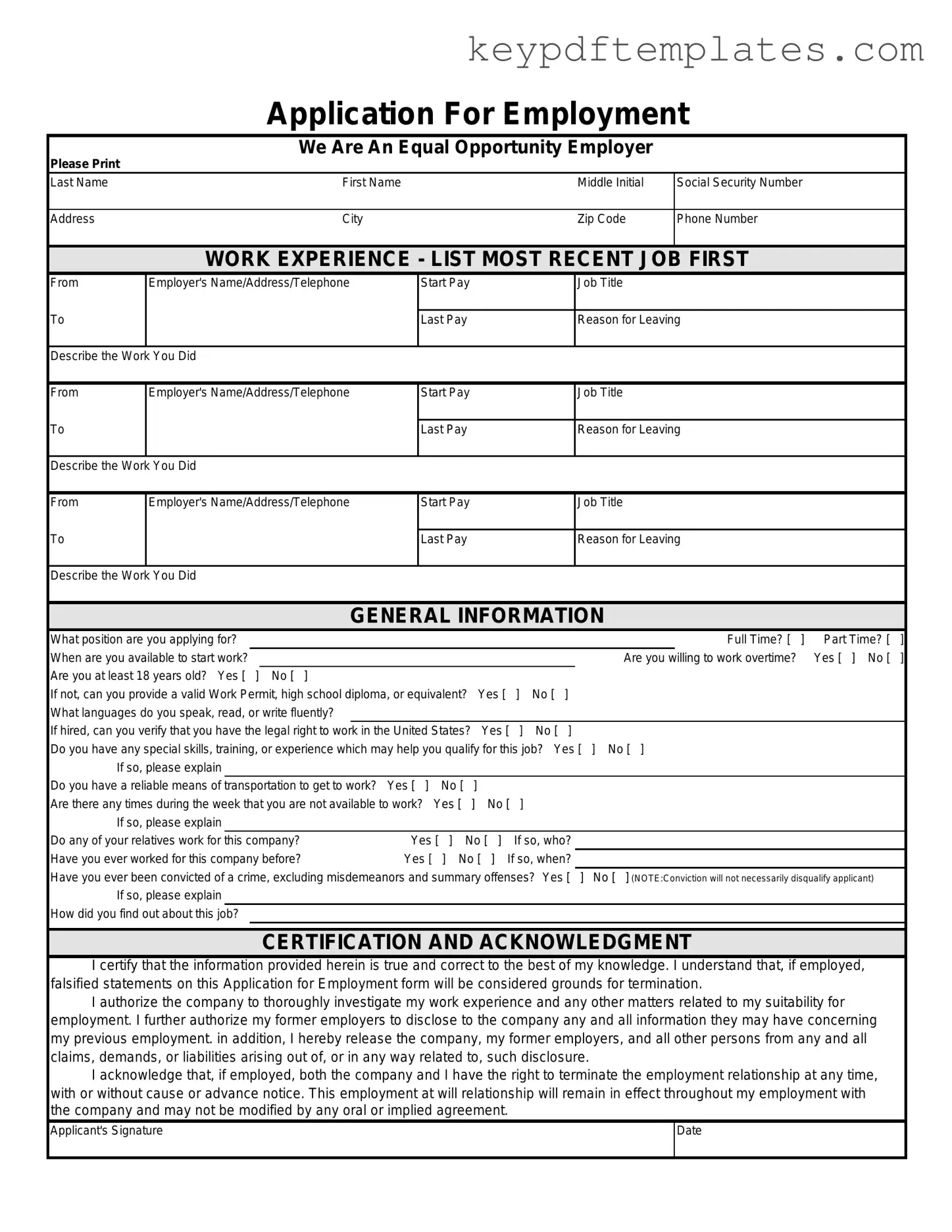Get Spanish Application Employment Form
The Spanish Application Employment form is a document designed for individuals seeking employment in environments where Spanish is the primary language. This form facilitates the collection of essential personal and professional information from applicants, ensuring that employers can evaluate candidates effectively. It includes sections on work experience, general information, and certification, all aimed at promoting a fair and transparent hiring process.
Modify Document Online
